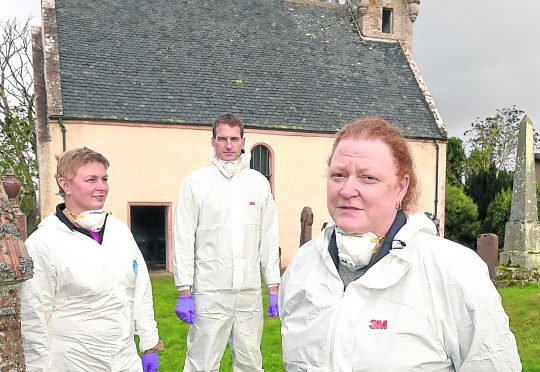Forensic experts who exhumed a body from a Highland crypt – hoping it contained the remains of a notorious 18th century clan chief – believe they have found one bone in good enough condition to get DNA.
Simon Fraser, the 11th Lord Lovat, was the last man executed at the Tower of London in 1747 for supporting the Jacobite rebellion.
A forensic team, led by Inverness-born anthropologist Professor Sue Black, exhumed a headless body from Wardlaw Mausoleaum at Kirkhill, near the Highland capital earlier this month.
And now, back in the labs, the scientists are excited at the prospect that one bone they unearthed may be in a strong enough condition to extract a DNA sample.
This could lead to them finally cracking the 270-year-old mystery of whether the remains are of Lord Lovat, nicknamed The Old Fox.
Erik Lundberg, of the Wardlaw Mausoleam Trust, said: “The best bone found, a sternum bone, gives us the best chance of getting a DNA sample. It is very exciting.
“This could help us to finally get a definitive answer.”
The bone is currently being analysed at a specialist genetics centre in Cardiff, Wales.
The forensic team has already established the remains were of an elderly man, which could point to the body being Lord Lovat.
Sue Black and her team are expected to reveal their findings at a meeting in the Highlands next month, with a date and venue still to be arranged.
The day of the exhumation and examination was filmed by television presenter Dan Snow, and there was excitement when the lead casket was first opened and revealed, thankfully, it contained human remains.
The Old Fox was executed for backing Bonnie Prince Charlie, whose uprising ended with the Battle of Culloden in 1746.
Lovat’s body was buried under the floor of a chapel at the Tower, but according to the Clan Fraser, it was later taken by loyal supporters north to the Highlands in Scotland at laid to rest at the family mausoleum at Kirkhill.
It is said that several people who had gathered to watch Lovat’s beheading died after the wooden scaffold they were on collapsed.
The clan chief is claimed to have found this incident funny and is said to have been so visibly amused when he was executed that his death led to the phrase ‘laughing your head off’.
The Old Fox is known today by readers and television audiences as the grandfather of Jamie Fraser, a leading character in the Outlander books and TV drama.
